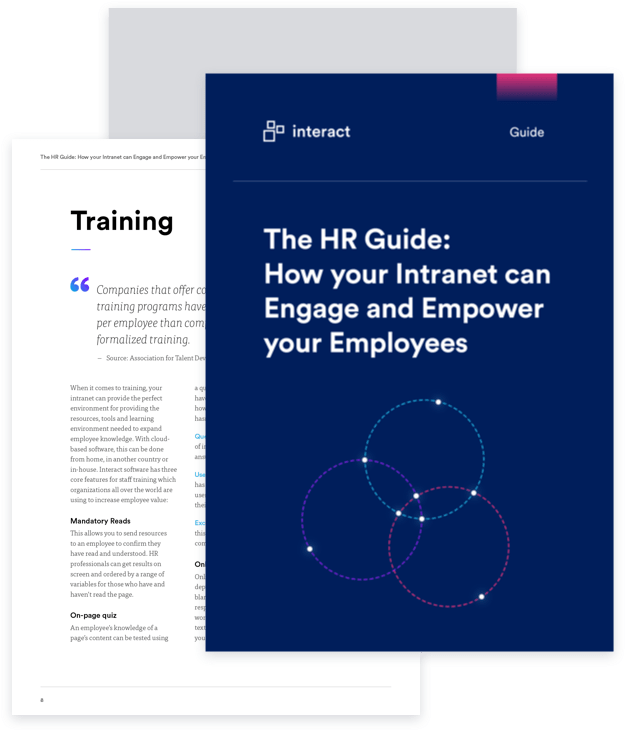HR metrics that matter: the metrics that you need to be using

While HR stands for many things, it is the deliverables that executives and senior management are most interested in: the metrics that outline the what, who and how of the business.
These metrics are used to determine the value and effectiveness of the work that goes on in HR – but it also allows you to analyse turnover, cost of labour and value of training across the organization. In short, they help you solve problems.
Not only will the right HR metrics allow you to analyse any employee issues your organization is experiencing, hey will also help you with the processes that surround your staff – recruitment, benefits, retention and so on.
Download the HR intranet guide today
But it’s important to remember that these metrics will only quantify different aspects of your staff – it’s the job of the HR department to assess and determine what the data is demonstrating.
Human capital

Undoubtedly, the most important factor in HR is being able to measure human capital. This is the measuring of your organization’s core competencies and competitive advantages. What HR can do to improve human capital is to effectively manage it in order that they can achieve maximum efficiency.
Human capital is important to organizations because they are the people who are actually working for the organization. They build the company’s core competencies and competitive advantages to the organization. With effective management of human capital, a company can achieve the maximum outputs from its own human capital and be superior to other competitors.
Important HR metrics

There are many HR metrics that could be considered but most HR professionals will agree that the most important metrics are as follows:
Time to hire
An important factor in hiring new staff is the length of time it takes between the position opening and the candidate signing the contract. From this simple gauge, you can see how efficient your recruitment processes are and allows you to see the varying ease or difficulty in filling job positions in various departments within the business.
Download the HR intranet guide today
Cost per hire
This is the calculation of how much it costs to hire new employees. This could take in recruitment costs, vacancy costs etc.
Absenteeism
Simply, the measurement of individuals’ absences from the organization. This could be separated into vacation, sick days, unauthorized absences and other reasons. And are given as a percentage of the overall amount of available working days. The Bradford Score is one of the formulas used to gauge absenteeism, and is based on the theory that short, frequent absences are more disruptive than prolonged periods of time off.
Employee turnover

This is the number of employees who leave the company each year. Employee turnover costs a lot to a business, but it also is symptomatic of potential problems within the organization, so if the metrics are high, it is important to investigate what is causing the turnover. So how do you calculate employee turnover? Combine the total number of employees at the beginning of the year to the number at the end of the year. Divide this total by two which gives you the average number of employees. Finally, divide this number of employees who were left during the year by the average number of employees to find the employee turnover rate.
Early turnover
This metric relates to the percentage of new recruits leaving in their first year. It is a way of measuring recruitment success within the company. Aside from poor recruitment choices, it could highlight the absence of adequate onboarding process within the organization. Early turnover comes at a huge financial cost to the company – according to a 2014 Oxford Economics report, the lost output cost over this period averages £30,000 ($43,700) for new hires.
Time since last promotion

Lack of promotion opportunities can be a big decider in people leaving to seek better roles elsewhere. Take a look at the average time in months since individual’s last internal promotion and keep a track on this type of movement within the company.
Revenue per employee (revenue/total number of employees)
This metric is one of the best ways of showing the organization’s efficiency. This can show you the revenue that each employee singularly represents and highlights the quality of those you employ.
Performance and potential
Otherwise known as the 9-box grid, this is the measuring and mapping of an employee’s potential in three levels. The model chart those who are underperformers, valued specialists, emerging potentials and top talents.
Performance and potential (the 9-box grid)
The 9-box grid appears when measuring and mapping both an individual’s performance and potential in three levels. This model shows which employees are underperformers, valued specialists, emerging potentials or top talents. This metrics is great for differentiating between, for example, wanted and unwanted turnover.
Soft metrics

Often described as qualitative rather than quantitative, soft metrics are usually gathered from interviews and surveys from employees. Soft metrics include workplace satisfaction and morale. They should be used alongside ‘hard’ metrics, and while both have equal importance, soft metrics are normally formed from feelings, emotions and personalities.
How an intranet helps with HR metrics
The administrative management of this area of an organization presents a considerable burden to the HR professional. While there are many HR metric systems available, many organizations find an intranet is the ideal tool for streamlining and automating processes.
Some of the many ways an intranet can help HR departments is by providing:
Digitalized performance workflows – this could be as simple as the sending out of reminders for reviews to the filling and submission of appraisal forms and pulse surveys.
Centralized hosting of documentation and policies – this can be anything from performance management forms, KPIs and surveys.
Use of metrics to trigger follow-up processes – need to speak to a manager about an absence concern? Employee given negative feedback? Intranet software can work alongside these processes.
Tracking soft metrics – The use of pulse surveys to get real-time insights into company and employee well-being can all be operated through Interact software.
The intranet’s role in HR is clear – it allows staff to self-serve, to find data and source information themselves, which in turn frees up HR staff and improves operational efficiencies.
But just as importantly, an HR intranet is a valuable source of evidence for all employee and organizational tracking. This consolidation of important data such as sickness, absenteeism and employee feedback allow this department to identify issues quickly. Having a close eye on the metrics coming through means you get the first warning signals before it becomes a deeper problem.
Gleaning data from exit interviews, gaining feedback from pulse surveys, seeing patterns in early turnover – all these potential issues can be thwarted before they escalate. When an HR department has a firm grasp on metrics, this is when they can start showing their true worth and the organization benefits as a whole.
these potential issues can be thwarted before they escalate. When an HR department has a firm grasp on metrics, this is when they can start showing their true worth and the organization benefits as a whole.

